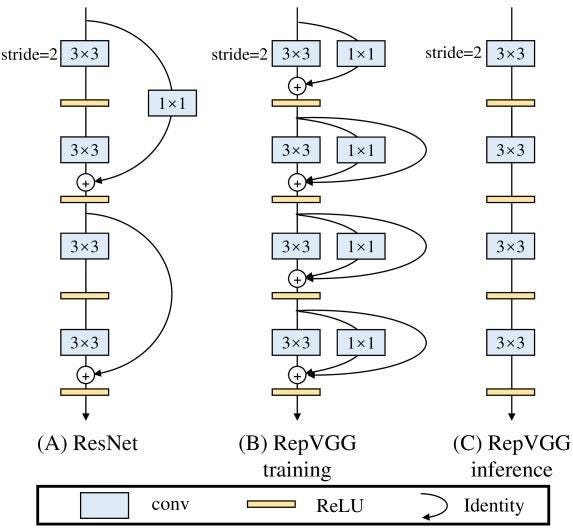Self-Driving Bike; TikTok Owner Opens Its Secret Sauce; Make VGG Great Again!
China’s AI news in the week of June 7, 2021
Please subscribe here to support Recode China AI.
Build your self-driving bike
On March 31, 2016, the Google Netherlands YouTube channel shared a video of a self-driving bicycle riding through the city, which was also later confirmed to be an April Fools' Day prank. A Chinese creator just made a self-driving bike a reality in four months (mostly weekends).
Zhihuijun (稚晖君), a creator on video-sharing platform Bilibili (China’s nearest equivalent of YouTube) showcased his homemade self-driving bike in a video demonstration. The idea was inspired by his recent bike injury — a landing face-first on the ground. Codenamed XUAN, the bike can hold itself upright without a kickstand, make turns, avoid obstacles, and navigate along a path.
The video published on June 5 quickly attracted over 2 million views on Bilibili and impressed many, including Bilibili Founder Chen Rui who commented “impressive, the creator just redefined bicycles”.
How did he build this self-driving bike? The first step was to stabilize the bike, a fixed gear, by adding momentum wheels to hold it upright. Then depth cameras and LiDARs were mounted on the bike to make it “see” its surroundings, powered by a Huawei Ascend 310 AI edge chip and an ESP32, an MCU with integrated Wi-Fi and Bluetooth. A Ctrl-Field Oriented Control was implemented to control its motion and speed. The bike was well-trained in a Unity simulated environment before riding on public streets. The full suite of hardware costs RMB 10,000 (~$1562).
The last thing you should know: Zhihuijun is a Huawei employee who joined the Chinese telecom giant through its “young talent program”, a recruitment program aiming to attract global young talents.
The project has been open-sourced on GitHub, so roll up your sleeves and build your self-driving bike!
ByteDance offers its recommendation algorithms
Recommendation algorithms are the secret sauce that drives TikTok and its China’s counterpart Douyin to sweep over the world. This week, TikTok’s owner ByteDance announced to offer its recommendation algorithms, AI technologies, and data analysis to more enterprise clients with the Volcano Engine brand.
Volcano Engine was launched in 2020 as an enterprise-facing service platform, offering fundamental technologies like personalized recommendation engines, A/B testing, AR filters, machine translation, and video streaming optimizations, which have been widely applied in ByteDance’s apps.
A number of top-tier clients have embraced Volcano Engine’s technologies, including Suning, JD, Vivo, China Construction Bank, Galaxy Securities, Geely, and Bilibili.
ByteDance is also reportedly foraying into China’s competitive infrastructure-as-a-service service in the coming third quarter to challenge Alibaba, Tencent, Huawei, and Baidu. Last month, media reported that ByteDance has dropped Alibaba's cloud services for its businesses outside China and scaled back its partnership with cloud service providers in China, signaling ByteDance’s ambition of building its in-house cloud service arm.
You can visit the Volcano Engine here.
Tsinghua U & Megvii revitalizes VGG
VGG, a classic convolutional neural network architecture and once the rockstar in the computer vision field, has been eclipsed by other architectures like ResNet, DenseNet, and the recent Transformer over the past few years. But a recent study from Tsinghua University and facial recognition company Megvii evinced VGG still has advantages over its peers.
In the paper RepVGG: Making VGG-style ConvNets Great Again, researchers proposed RepVGG, a simple architecture with a stack of 3 × 3 Conv and ReLU, which is said to be suitable for GPU and specialized inference chips. The paper argued that using simple ConvNets has three advantages: fast, memory-economical, and flexible. Since this architecture is tailored for training, not for inferencing, researchers further proposed to decouple training and inferencing via structural re-parameterization by converting the architecture from one to another through parameter transformation.
Experiments showed that RepVGG reaches over 80% top-1 accuracy on ImageNet, which is the first time for a plain model. On NVIDIA 1080Ti GPU, RepVGG models run 83% faster than ResNet-50 or 101% faster than ResNet-101 with higher accuracy and show favorable accuracy-speed trade-off compared to the state-of-the-art models like EfficientNet and RegNet.
The paper has been open-sourced on GitHub.
Investment news
China’s ride-hailing giant Didi Chuxing has filed for its U.S. IPO. The company is expected to fetch a valuation of over $70 billion and raise 8% to 10% of its valuation amount in the offering. Didi Chuxing will use the money to invest in technologies for electric vehicles and autonomous driving. The company reported a revenue of RMB 141.74 billion, or $21.63 billion in 2020, with a net loss of $1.6 billion.
Last week, we reported Chinese AI chip unicorn Horizon Robotics is considering a U.S. initial public offering to raise up to $1 billion. The company has recently bagged new money, bringing its Series C financing to $1.5 billion. Its post-money valuation now reaches $5 billion.
WITINMEM, an Hangzhou-based startup building compute-in-memory chips, has raised a total of RMB 300 million in its Series A funding round. The company has rolled out three SoCs for mobile scenarios.







